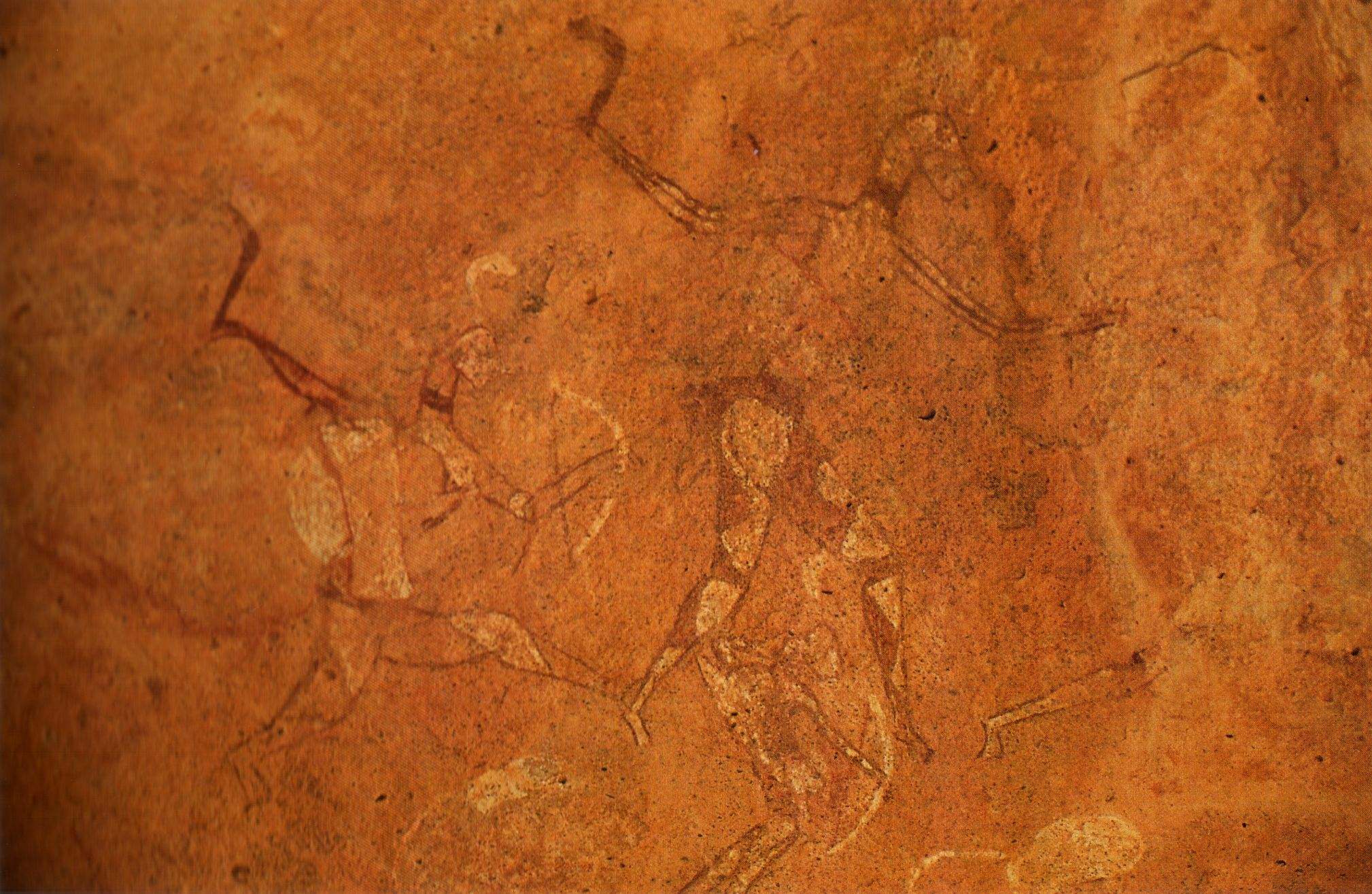In Africa, the
continent who saw the rise of the first hominids; the throwing stick,
that was originally a simple tree branch, was probably one of the first
tools during the lower Paleolithic period, then evolved with the
beginning of woodworking. Signs of woodworking using tools made of
flint were discovered at the Koobi Fora archeological site in Kenya and
dated back 1.6 million years ago.
But it is in
the Saharian region of North Africa that the use of throwing sticks was
proven since the late Neolithic period (6,000 BC). Its use apparently
spread north and to the Nile valley through the Libyan desert. Sudan
also seems to have been at the center for the spread of the throwing
stick across the region.
Paintings and engravings of the Neolithic Sahara show that short and bent sticks were probably used for throwing:
A man holding a bent stick.
Libya, massif of Messak, Imrawen


A man holding a bent stick and an elephant.
Massif of Messak, Libya
Also in the southern African country of Namibia, 2,000-1,000 BC::

We can
also find some evidence of throwing stick usage in Cameroun, Guinea,
Morocco, Niger, Canary Islands, Namibia and South Africa.
The traditional throwing stick evolved with the apparition of iron in
central Africa around 600 AD and saw the use of sickle weapons that
were thrown.
These weapons are often crescent-shaped, reminding of the agricultural tool where they name came from.



